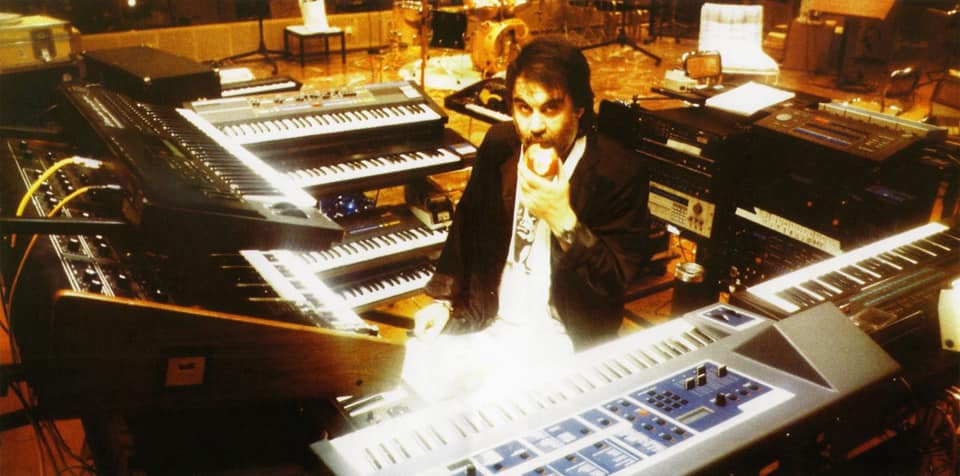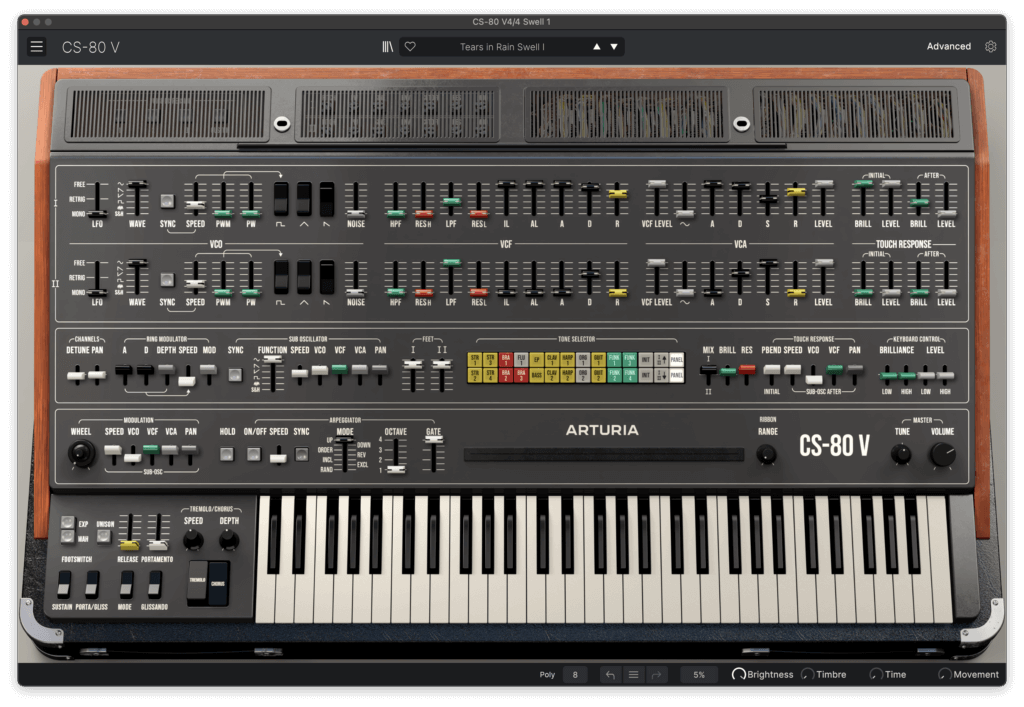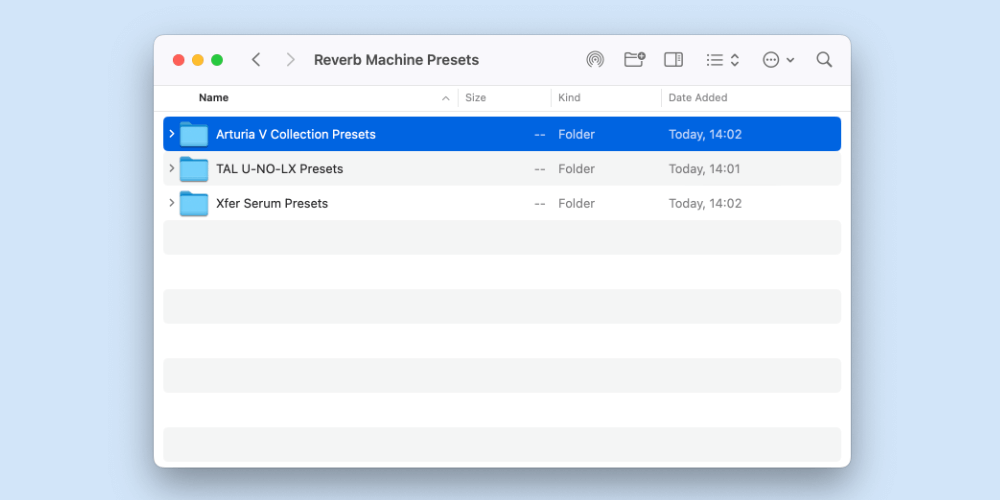Vangelis’ Blade Runner Synth Sounds

Blade Runner was released in 1982; it was directed by Ridley Scott and featuring an almost entirely-electronic soundtrack by Greek composer and synthesizer maestro Vangelis. The film wasn’t a huge success, it didn’t make a lot of money, and it polarized audiences with it’s studio-added narration. Despite this, it went on to become a cult classic one of the most influential films of all time. In 2017 it got a direct sequel, titled Blade Runner 2049.
The original film and soundtrack have had a huge influence on science fiction, the cyberpunk aesthetic and electronic music. Sadly, Vangelis passed away at the age of 79 last month, but his legacy lives on through the influence of his music.
Vangelis started his career with the prog-rock band Aphrodite’s Child, before scoring soundtracks for films and releasing a string of synthesizer-based New Age solo albums. He scored Chariots of Fire in 1981, which netted him an Academy Award, a number 1 spot on the Billboard Hot 100, and international fame. His soundtrack Chariots of Fire was unusual in that it used a modern 1980s electronic sound to score a period sports drama depicting the 1924 Olympics.
The success of Chariots of Fire led Vangelis to work on Blade Runner, whose director, Ridley Scott, he had formerly worked with on a Chanel No.5 advertisement called Share the Fantasy. In contrast to the uplifting, rich sound of Chariots of Fire, he composed a dark, moody, often ambient soundscape for Blade Runner. The film and its soundtrack have had a considerable influence on subsequent movies using electronic scores, as well as on electronic musicians.
In this article, I’ll analyse the sounds of the song Tears in Rain, which plays during the film’s final scene, as Rutger Hauer’s android Roy Batty gives his iconic monologue. The 2019 sequel, Blade Runner 2049, features a faithful reprise, retitled Tears in the Rain, by Hans Zimmer & Benjamin Wallfisch. Here’s my full remake:
Vangelis Synths
Vangelis had his own music studio, Nemo Studios in London, which was built around his focus on improvisation and performance, as well as using new music technology to realise his compositional vision. He first used the Yamaha CS-80 on his 1977 solo album Spiral, and he raved about it in several interviews, mostly for its abilities as a performance synthesizer, allowing him maximum expression in his playing. As well as being an early, fully polyphonic analog synthesizer, the Yamaha CS-80 gave the player control over the sound via velocity, aftertouch and a ribbon controller.
Vangelis’ process saw composition and performance as being intricately linked. While working on Blade Runner, he had his studio filled with video players, and when new tapes of footage came in, he would play along with them on his collection of synthesizers. This was also the era before SMPTE time codes, so everything had to be synchronized manually, and some of the more ambient compositions were played in free time, synced to the picture rather than a metronome. His tape-recorder based system was noisy, so he used dbx noise-reduction systems and kept overdubs to a minimum.
The Nemo Studios website is an invaluable resource containing a trove of information on the equipment used in his studio, as well as his recording methods.

Rhodes Melody
The melody of Tears in Rain is played on Vangelis’ Fender Rhodes electric keyboard, which he had modded with an onboard graphic EQ. I used the Arturia Stage-73 plugin with the default Clean Mark V preset for my remake. The original sound has a chorus effect, which I recreated using UAD Studio D Chorus, a plugin emulation of the Roland Dimension D rack unit that was popular in the early 80s.
- Rhodes Dry 00:00
- Rhodes Chorus 00:00
- Rhodes Reverb 00:00

Strings
The chords of Tears in Rain are played on a lush string synth sound, which likely came from the Roland VP-330. Also a Vocoder, the 330 had a lush string machine sound similar to the Roland RS-202 and 505. The only VP-330 emulation I could find is XILS V+, which I used in my remake, though most string machine plugins should get you close.
I used the default Simple Strings sound which features only the 330 strings run through the signature Roland ensemble effect and automated the tone control in XILS V+ to vary the brightness in key parts of the song, keeping things nice and dynamic.
- Strings Dry 00:00
- Strings Wet 00:00

There’s also a higher strings sound which plays at certain parts of the song, which I recreated using Arturia Prophet-5 V. To create lush strings in Prophet-5, use the LFO and mod wheel to apply vibrato to only one of the oscillators, create rich natural chorusing. I then ran this patch through chorus, stereo widening and a small amount of Valhalla ShimmerVerb.
- High Strings 00:00
- Strings Layered 00:00

Brass
The brassy swells come from Vangelis’ Yamaha CS-80, which was his favourite synthesizer, to the extent that he allegedly had four CS-80’s at one point. The CS-80 has velocity and aftertouch, which are set with the Initial and After faders on the far-right of the panel. With these set, you can create much more expressive performances. If you listen closely to the original sound, you’ll hear the each note varies slightly in brightness and volume.
There are also some descending pitch slides towards the end of the song, which were done using the CS-80s ribbon controller. In Arturia CS-80 V the ribbon is controlled via your MIDI keyboard’s pitchbend wheel.
- CS Brass 00:00
- CS Brass High 00:00
- CS Slide 00:00

Bass
There’s a deep, swelling bass in Tears for Rain that holds down the low-end at key parts of the song. Interestingly, it doesn’t play on every chord, instead only appearing to add emotional weight to key chords. I used Arturia Mini V for my remake, though Vangelis could have played this part on any of his synths.
To create the patch, use long attack, decay and sustain times, so the notes slowly fade in and then out after the key is released. My patch uses three slightly sawtooth waves and I’ve set the filter cutoff to 230Hz with keyboard tracking on but no filter envelope. I’ve run the patch through Decapitator and then into the reverb send with all the other tracks.
- Bass 00:00

Reverb
The Blade Runner soundtrack has a huge, cavernous reverb sound that drenches most of the tracks, giving the otherwise dry-sounding CS-80 an epic sound. Vangelis’ reverb effect of choice was his Lexicon 224, which he used from 1980 onwards. For my remake, I used Valhalla VintageVerb as an effect send, routing all the tracks through it. I also used SoundToys EchoBoy with a Space Echo-style patch for extra ambient space.

Downloads & Related
Thanks for reading! The Arturia CS-80 V, Prophet-5 V and Mini V presets used in my remake are available for free download below. Note that these were made with the newly updated plugins released in the Arturia V Collection 9, so may not work on older versions.
Download the Presets
Download the synth presets created for this article here. Alternatively, you can find them in the Synth Sounds Collection, a free download containing all of my free synth presets.
Header artwork by Makarxart
Further Reading
Vangelis’ work on Blade Runner has been well documented, and below I’ve listed some great resources for further exploration.
- The official Nemo Studios website is an invaluable trove of Vangelis information, including all the gear he used.
- Electronics & Music Maker interview from December 1984 where he discusses the CS-80 and improvisation.
- Reverb.com’s The Synth Sounds of Blade Runner with Justin DeLay.
- Ali Jamieson’s Replicating the Blade Runner Soundtrack article, with an extensive list of songs that sample the soundtrack.
- FACTmagazine’s Do Androids Dream Of Electronic Beats? video looks at the influence of Vangelis’ soundtrack on electronic music. Killer title too!
- Revisiting Vangelis: Sonic Citation and Narration in the Score for Blade Runner 2049. A longform article looking in-depth at how Vangelis’ musical ideas influenced the sound of the Blade Runner 2049.
- SoundWorks Collection: The Sound of Blade Runner 2049. A short documentary looking at the 2049 collection and its Vangelis influence. Worth watching for the clip of Hans Zimmer and Benjamin Wallfisch playing a Yamaha CS-80.




